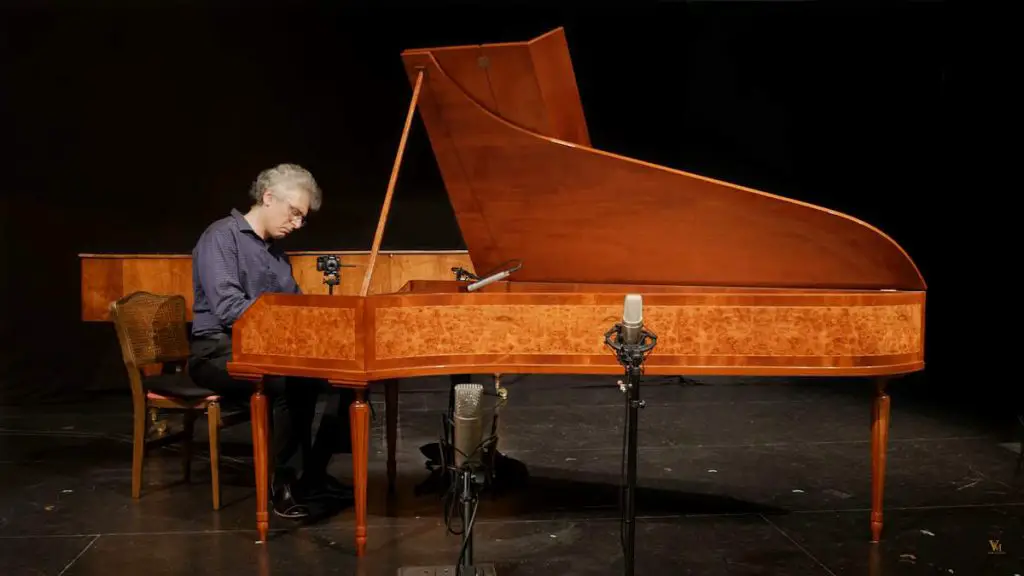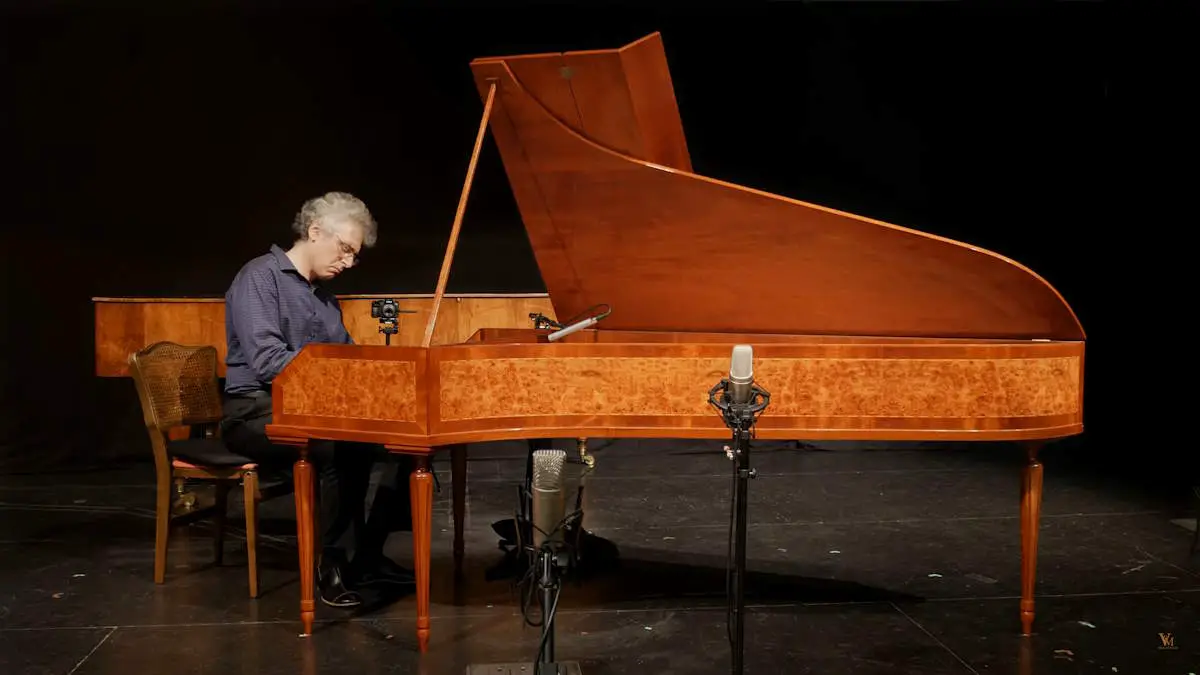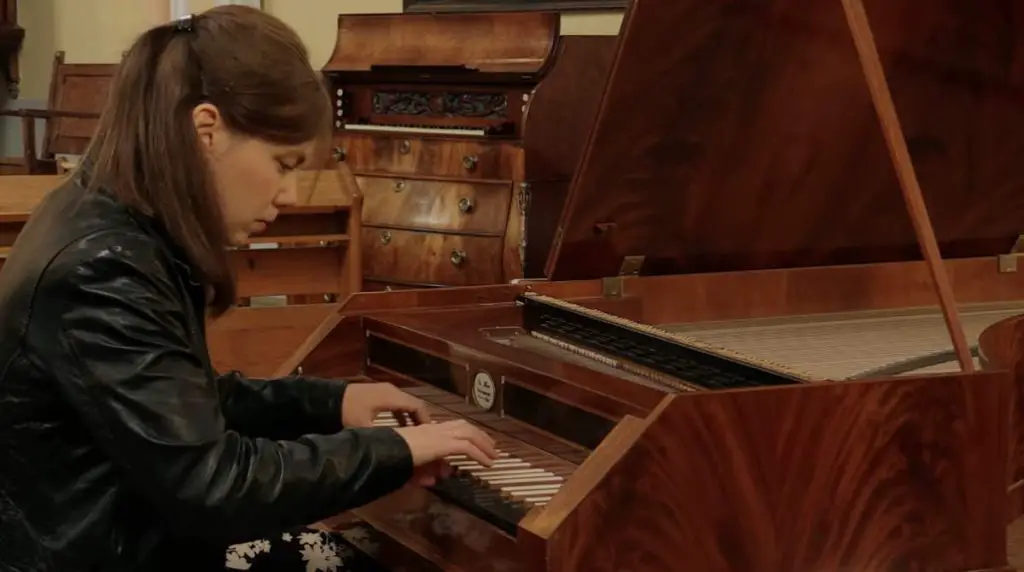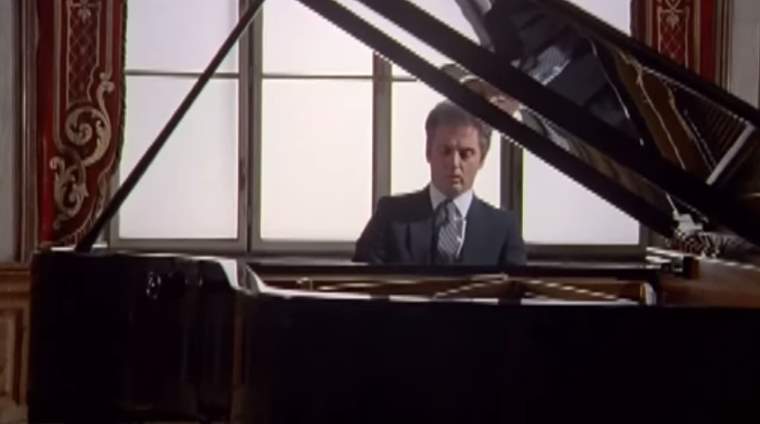American fortepianist and pianist Eric Zivian performs Ludwig van Beethoven’s Piano Sonata No. 14 in C-sharp minor, marked Quasi una fantasia, Op. 27, No. 2, popularly known as the “Moonlight sonata“ on fortepiano, the original instrument.
The sound of the piano in the time of Beethoven was quite different than that of the modern piano, and in the video below, you will hear the original colors, textures, and the inner voices of the music as they sounded at the time of composition. This work is now available for the first time in 4K, ultra high definition video, with 96/24 audio on a period instrument.
This video is a coproduction of the Valley of the Moon Music Festival and Voices of Music. Fortepiano by Paul Poletti, after Jean-Louis Dulcken, 1795.
Beethoven’s Moonlight Sonata
The Moonlight Sonata was composed in the summer of 1801 in Hungary, on an estate belonging to the Brunswick family. The composition was published in 1802 and was dedicated to Beethoven’s pupil and passion, 17 years old Countess Giulietta Gucciardi.
The Sonata is one of the most popular piano sonatas from Beethoven’s creation. It is also named The Moonlight Sonata by the German poet and music critic Ludwig Rellstab (13 April 1799 – 27 November 1860) who, in 1832, had this inspiration on a moonlit night on the banks of the Lucerna River. Some biographers make the connection between the unshared love the composer held for Giulietta Guicciardi and the sonorities of the first part. Even more so, this sonata was dedicated to Giulietta, the musical theme of the first part being borrowed from a German ballad as Wyzewa observed.
According to the Swiss classical pianist and conductor Edwin Fischer (6 October 1886 – 24 January 1960), this image has no connection with Beethoven’s intentions. He rather attributes this atmosphere to the feeling that overwhelmed the composer when he took watch at the side of a friend who prematurely left the world of the living.
In one of Beethoven’s manuscripts, there are several notes from Mozart’s Don Juan, notes that follow the killing of the Commander by Don Juan, and lower, this passage is rendered in C sharp minor in absolute resemblance to the first part of the sonata in C sharp minor. Analyzing and comparing, one could realize that it cannot be the case of a romantic moonlit night, but rather of a solemn funeral hymn.
Movements
The Moonlight sonata has three movements. They give the impression of a whole first of all through the elaboration of themes and motifs. Consequently, the main musical theme of the first part becomes very elaborate in the second movement, and the second motif of the main theme will be encountered in the first theme of the third movement.
With start times in the video:
- [00:00] Adagio Sostenuto. The first movement is based on an accompanying motif in triplet rhythm that, together with an accented notes motif, creates the impression of a grave, meditative state of mind. The composer adds the following direction at the beginning of the first part: “Si deve suonare tutto pezzo delicatissimamente e senza sordino”, which means that the performer should play the part with great delicacy and without dampers. It is also true that the modern piano has a much longer sustained time than the instruments of Beethoven’s day. Therefore, his instruction cannot be followed by pianists playing modern instruments without creating an unpleasantly dissonant sound.
- [04:44] Allegretto. The second movement is very small in size which leads to the idea that it was conceived more as a connection between the first and third movements, rather than a part all by itself. The feeling is now denser in consistency, and the fairly meditative character of the first part gradually fades away, preparing the tumult of the finale.
- [06:58] Presto Agitato. The finale of Beethoven’s Moonlight sonata s twice as long as the first two movements. Fischer felt this part as being the representation of a storm. A very impetuous storm, if we take into account the fact that at the time when he was composing the sonata, Beethoven was madly in love with Giulietta with whom he had hopes of getting married. The listener can distinguish two themes in this part: a tempestuous one built on arpeggios and strongly accented notes and a second theme, more lyrical in a form that comes into contrast with the first one. Both themes are magnificently interlaced and create the impetuous storm emotion Fischer experienced.
Eric Zivian

Eric Zivian grew up in Toronto, Canada, where he graduated from the Royal Conservatory of Music. At age fifteen, he left home to attend the Curtis Institute of Music, where he received a Bachelor of Music degree. He holds graduate degrees from the Juilliard School and the Yale School of Music.
He studied piano with Gary Graffman and Peter Serkin and composition with Ned Rorem, Jacob Druckman, and Martin Bresnick. He attended the Tanglewood Music Center both as a performer and as a composer.
He has given solo recitals in Toronto, New York, Philadelphia, and the San Francisco Bay Area. He has played concertos with the Toronto Symphony Orchestra, the Santa Rosa Symphony, the Philharmonia Baroque Orchestra, and the Portland Baroque Orchestra.
Since 2000, he has performed extensively on original instruments, playing fortepiano in the Zivian-Tomkins Duo and the Benvenue Fortepiano Trio. A longtime member of the Left Coast Chamber Ensemble, he has performed with the Empyrean Ensemble and Earplay. He is a frequent guest artist on the San Francisco Conservatory’s faculty chamber music series.
Eric Zivian’s compositions have been performed widely in the United States and in Tokyo, Japan. He was awarded an ASCAP Jacob Druckman Memorial Commission to compose an orchestral work, Three Character Pieces, which was premiered by the Seattle Symphony.
Sources
- Piano Sonata No. 14 (Beethoven) on Wikipedia
- Eric Zivian’s biography on the Left Coast Chamber Ensemble website


